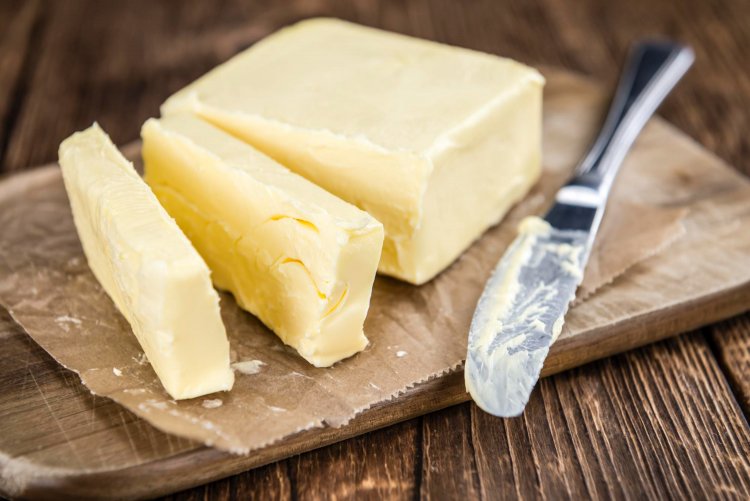Butter: A Versatile Culinary Essential
Butter, a beloved staple in kitchens worldwide, holds a significant place in culinary history and modern gastronomy. Derived from churned cream, butter is cherished for its rich flavor, creamy texture, and versatile uses in cooking, baking, and spreading. Among the various types of butter available, each offers unique characteristics that enhance culinary experiences.

History and Production
The history of butter spans centuries, reflecting rich agricultural heritage and culinary traditions. Made from cream, butter undergoes a meticulous process of churning and sometimes fermentation, resulting in its distinctive taste and texture. This artisanal approach not only preserves the cultural essence of butter-making but also ensures a product of exceptional quality.
Nutritional Value and Health Benefits
Beyond its exquisite taste, butter provides essential nutrients beneficial to health. It is a concentrated source of fat-soluble vitamins such as vitamin A, crucial for vision and immune function; vitamin D, important for bone health and immune regulation; vitamin E, an antioxidant that protects cells from damage; and vitamin K, essential for blood clotting and bone health. Additionally, butter contains conjugated linoleic acid (CLA), which has been studied for its potential benefits in weight management, heart health, and inflammation reduction.
Butter's fat content is primarily saturated fat, which historically has been viewed negatively. However, recent research suggests that not all saturated fats are equal, and moderate consumption of butter may not have the detrimental effects once thought. In fact, the unique composition of butter's fats, including short-chain and medium-chain fatty acids, may offer metabolic benefits and promote satiety.
Moreover, butter from grass-fed cows is particularly prized for its higher content of omega-3 fatty acids and antioxidants, compared to butter from grain-fed cows. These compounds contribute to its nutritional profile and potential health benefits.
Culinary Uses
Butter's versatility in the kitchen is unparalleled. Its high smoke point makes it ideal for frying and sautéing without burning, while its creamy texture enhances sauces, pastries, and desserts. In cuisines worldwide, butter plays a pivotal role in both savory and sweet dishes, adding richness and depth of flavor.
In savory dishes, butter is used to sauté vegetables, sear meats, and create creamy sauces such as béarnaise or hollandaise. Its emulsifying properties make it essential in making velvety pan sauces and enhancing the flavors of grilled or roasted foods.
For baking, butter is a fundamental ingredient in creating tender cakes, flaky pastries, and rich cookies. Its ability to aerate when beaten with sugar forms the base for countless desserts, from buttercream frosting to shortbread crusts.
Beyond cooking and baking, butter is also celebrated as a simple yet indulgent spread on breads and toast, often combined with honey or preserves for breakfast. Its use extends to enhancing the flavors of steamed vegetables, mashed potatoes, and even popcorn, where melted butter adds a satisfying richness.
Cultural Significance
In cultural contexts, butter holds significant importance beyond its culinary applications. It symbolizes hospitality and tradition, often being offered alongside freshly baked bread as a gesture of warm welcome. Its presence in festivals and celebrations underscores its role in communal gatherings and family meals, connecting generations through shared culinary experiences.
Global Appeal
While deeply rooted in specific culinary traditions, butter's appeal extends globally. Its distinct flavor and nutritional profile have garnered attention among chefs and food enthusiasts worldwide, leading to its incorporation into diverse international recipes and culinary innovations. As interest in artisanal and traditional foods grows, butter continues to captivate palates and inspire culinary creativity beyond borders.
In conclusion, butter stands as a testament to the intersection of tradition, taste, and nutritional value. From its origins in ancient butter-making techniques to its place on modern dining tables, butter exemplifies the enduring appeal of artisanal craftsmanship and culinary excellence. Whether enjoyed spread on toast, melted over vegetables, or used in gourmet pastries, butter remains a beloved ingredient cherished for its rich heritage, delightful flavor, and potential health benefits.
Disclaimer
The information provided in this article is for educational purposes only and should not be considered medical advice. If you have any health concerns or are experiencing symptoms, it is important to consult with a healthcare professional, such as a doctor or clinic, for proper diagnosis and treatment. Always seek the advice of your doctor or other qualified health provider with any questions you may have regarding a medical condition. Do not disregard professional medical advice or delay in seeking it because of something you have read in this article.
#ButterHistory #NutritionalValue #HealthBenefits #CulinaryUses #CulturalSignificance #GlobalAppeal #ArtisanalCraftsmanship #CulinaryExcellence #HealthyEating #TraditionalFoods
What's Your Reaction?





















